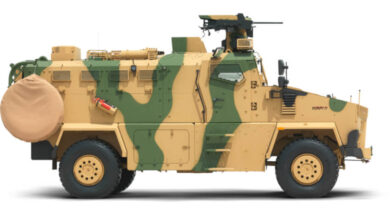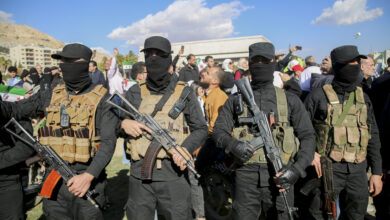Esper says US pullback from parts of northeast Syria complete
The U.S. has completed a drawdown of troops from northeast Syria and the ones who remain in the semi-autonomous region have pulled back from contested areas to guard other positions, Defense Secretary Mark Esper said.
The defense secretary told Reuters in an interview published Thursday, December 5 that the number of U.S. troops in northeast Syria region will indefinitely fluctuate at around 600, adding that he can “dial up” the number “if we see things happen.”
Esper also said Coalition allies are “talking again” and that other governments may yet send limited numbers of troops to the area.
There were previously about 1,000 U.S. troops in Syria’s northeast in October when President Donald Trump ordered forces to get out of the way of Turkey’s impending invasion against a predominantly-Kurdish militia that had partnered with the U.S. and its Western allies against Islamic State.
Turkey’s incursion, dubbed Operation Peace Spring, has killed hundreds of people, displaced more than 100,000, and brought Syrian government troops as well as Russian forces into the northeast as U.S. Special Operations Forces rushed to get out of the way, destroying equipment and leaving behind operating bases in the haste.
Esper initially announced a full withdrawal of all U.S. forces from northeast Syria, but the administration later reversed that decision when Trump said some U.S. forces would remain in the area to guard strategic oilfields, a move that has left Kurdish officials worried about a possible expansion of Turkey’s incursion.
Turkey considers Syria’s predominantly-Kurdish People’s Protection Units (YPG) to be an arm of the Kurdistan Workers’ Party, or PKK, which has waged a decades-long insurgency against the Turkish state.
The YPG formed the core of the Syrian Democratic Forces, an alliance of Syrian militias armed, advised and given air cover by the U.S.-led Coalition against ISIS in Syria. The U.S. and Western allies do not consider the YPG a terrorist organization.
The SDF has turned to Russia and the Syrian government of Bashar al-Assad for limited support in the areas evacuated by American forces.
“The SDF needs Russia to make the Turks stop,” said Aron Lund, a fellow at The Century Foundation.
The U.S. has pulled out of western and border areas of the SDF zone, redeploying its forces from bases near key cities like Kobani, Manbij and Ain Issa in order to defend oilfields under SDF control in Syria’s east – a strategic prize coveted by the Assad government and Russia.
“Russia is not going to try to do that unless the SDF gives something back – most probably, by conceding power or land to Assad’s government, and perhaps in some areas also to Turkey and its Syrian rebel allies,” Lund told The Defense Post.
Major joint U.S.-SDF counter-ISIS operations resumed in November after a pause following the chaos of Turkey’s attack and confusion over American withdrawal. SDF leadership has expressed willingness to continue working with the U.S. against ISIS sleeper cells.
The Trump administration has tried but largely failed to gain commitments from Coalition allies to send special forces to fill the gap of withdrawing U.S. soldiers since Trump first announced a unilateral U.S. withdrawal from northeast Syria in December.












